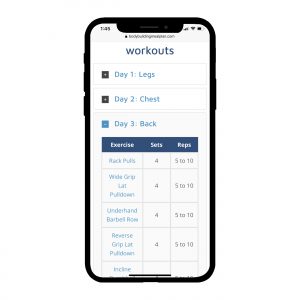Stairmaster vs Treadmill
Ultimate Showdown of Cardio Machines for Fat Loss
By: Jeremy Fox, CNC, CPT – Published: December 21, 2022
When it comes to cardio, you want the most results for every minute you exercise. But it’s hard to decide which cardio equipment you should use to optimize the effect.
Two of the most popular cardio machines are the treadmill and Stairmaster. And each activity has pros and cons.
In this article, I compare the physical fitness and fat-burning effects of the Stairmaster vs treadmill. So you can decide which is best to help you reach your goals faster.

Intro to Stairmaster vs Treadmill
Before we get into the nuts and bolts, we must start with an overview of the Stairmaster and treadmill equipment. That way, we’re all on the same page when we hammer out the details.
Stairmaster
Stair steppers are a type of fitness equipment replicating the dynamic activity of climbing stairs. With this machine, your body stays in one spot while the steps move underneath you, sort of like walking up the down escalator.
You can change the intensity of the exercise by increasing or decreasing the speed at which the stairs move, making you climb faster or slower. But the incline of the stairs remains constant.
Also, it’s important to know that “StairMaster” is a brand name that manufactures stair stepper machines. It’s like the brand name Jacuzzi in the hot tub world.
So all Stairmasters are stair steppers, but not all stair steppers are Stairmasters. Other terms for this equipment include stair climber, step climber, stepmill, or step treadmill.
Treadmill
A treadmill is a machine with a variable-speed conveyer belt that enables you to walk or jog while staying in one location.
As with the Stairmaster, you can increase or decrease the speed to change the exercise intensity. But some treadmills also let you set the belt at an incline, increasing the difficulty.

Stairmaster vs Treadmill Comparison
The first thing you’ll notice about the Stairmaster and treadmill is that they feel different. So I wanted to see if your body responds differently regarding your heart rate and calories burned.
From there, I sought to determine if there was any difference between the Stairmaster and the treadmill for fat loss and cardiovascular fitness. And finally, I compared the Stairmaster and treadmill from a risk and cost standpoint.
1. Stairmaster vs Treadmill Body Mechanics
There are some critical distinctions in kinematics (the way your body moves) on the Stairmaster vs treadmill.
For starters, the treadmill replicates our normal walking or jogging stride, which is very efficient. And the movement is primarily horizontal or at a shallow incline.
By comparison, the Stairmaster requires more vertical movement while stepping up an approximately 45-degree incline. Most of us walk up stairs daily, but it is a far less efficient gait than walking on a relatively flat surface.
Also, your hips, knees, and ankles bend much more on the Stairmaster. And you must lift more of your body weight with each step, which requires more glute, quad, and calf activation.
On the other hand, the treadmill allows for a more efficient gait that you can potentially sustain for longer durations.

2. Stairmaster vs Treadmill Heart Rate & Oxygen
Interestingly, studies suggest heart rates are similar on the Stairmaster and treadmill at steady-state workloads of equivalent oxygen uptakes1,2. So basically, one machine shouldn’t elevate your heart rate differently than the other when exercising at the same MET (metabolic equivalent task).
However, studies also show that oxygen consumption on the Stairmaster was about 20% less than on the treadmill. This difference is likely because the Stairmaster uses both aerobic and anaerobic energy pathways.
Therefore, the Stairmaster falls between cardio and resistance training regarding heart rate and oxygen uptake. The chart below shows oxygen consumption rates for various forms of training.

3. Stairmaster vs Treadmill Calories Burned
It’s important to realize that energy expenditure is directly related to heart rate. In other words, the higher your heart rate, the more calories you burn.
And as mentioned, studies show that heart rate is similar on the Stairmaster and treadmill at the same exercise intensity. Therefore, you should burn the same number of calories on each machine at equivalent heart rates.

4. Stairmaster vs Treadmill Fat Loss
Choosing cardio activities that burn the most calories per minute might seem like the logical thing to do. However, it’s vital to understand that training intensity directly affects whether your body burns fat or carbohydrates for energy.
Basically, the higher the intensity, the more carbohydrates you burn during that activity. So there is a point of diminishing returns where burning more calories doesn’t mean burning more fat.
Therefore, you must find the sweet spot where you’re burning the maximum amount of calories from fat during cardio. And research suggests that training at 60-70% of your maximum heart rate is ideal for fat burning.
Of course, you can target this heart rate range on the Stairmaster or the treadmill. So, either cardio activity will work as long as you can include enough weekly workout volume to create a calorie deficit necessary for fat loss.


Stairmaster vs Treadmill Cardio & Fitness
VO2 max is the maximum volume of oxygen your body can use during exercise. And higher peak oxygen volumes are a key indicator of your overall fitness and cardiovascular health.
Moreover, athletes or individuals striving to improve physical performance should train to increase their VO2 max.
In a 2016 analysis, researchers reviewed 28 studies to determine if there is a relationship between exercise intensity, duration, and total volume. They found that exercise intensity did not affect training-induced V02 max increases3.
Instead, this report shows that you can improve cardiovascular fitness with shorter high-intensity workouts and longer low-intensity workouts. So both the Stairmaster and treadmill can be effective modes of cardio fitness training.
However, the researchers’ observations also suggest that exercise intensities of around 80-92.5% VO2 max may be ideal for eliciting improvements in oxygen uptake. And as the previous study showed, the treadmill generally results in higher oxygen consumption.
6. Stairmaster vs Treadmill Impact & Injury
The Stairmaster and treadmill are not as low impact as an elliptical or stationary bike. But they generally have a lower impact than overground running.
Many people will find the Stairmaster puts less impact on the joints due to the shorter distance of footfalls. So it may be better for those with knee pain or shin splints.
On the other hand, the treadmill is less taxing on leg muscles that might be sore from other workouts. In addition, the risk of injury is probably lower if you fall off a treadmill compared to an elevated Stairmaster.
7. Stairmaster vs Treadmill Cost
Some of you may consider purchasing a Stairmaster or treadmill for your home gym. In that case, you’ll definitely want to compare the cost of each machine.
You can get an entry-level treadmill for under $400. At the same time, commercial-grade treadmills can cost $2,000 or more.
By comparison, the least expensive stair climbers start at $3000 and run upwards of $10k.
Stairmaster vs Treadmill Benefits & Limitations
By now, you’ve probably gathered that the Stairmaster and treadmill each offer a unique set of pros and cons. But it helps to review the main points and list them side by side for a clear comparison.
Stairmaster
The Stairmaster is somewhat of a hybrid between aerobic and anaerobic exercises. In other words, it relies more on the oxygen energy pathway than resistance training, but not as much as walking or steady jogging.
Also, the vertical climbing motion works your lower body through a more extensive range of motion and works the glutes, quads, and calves to a greater extent. As a result, it’s reasonably easy to elevate your heart rate even at slow speeds.
However, the biggest obstacle to getting on a Stairmaster is that not every gym has one, and they are extremely expensive to add to your home gym.
Pros
- More lower-body muscle activation
- Lower impact
- Greater joint range of motion
- Elevate heart rate without running
Cons
- Too expensive for most home gyms
Treadmill
The treadmill is a much more common piece of equipment; many people even have one in their homes. In addition, walking or jogging is a very natural and efficient movement for the human body.
This efficiency means you can sustain the exercise longer and stay in the oxygen utilization pathway, which is best for increasing your aerobic capacity. But walking on a treadmill is also easy for lower-intensity fat-burning workouts.
Pros
- More efficient gate
- Better for increasing aerobic capacity
- Potential for longer cardio sessions
- Ability to change the incline
- More affordable for home gyms
Cons
- Higher impact on joints
Stairmaster vs Treadmill: Which Is Better?
The Stairmaster and treadmill each have their advantages. So which machine is best for you depends on your fitness goals.
Let’s compare the Stairmaster vs treadmill for weight loss, increasing athletic performance, and general bodybuilding.
Weight Loss
When doing cardio for weight loss, the most critical thing is maximizing the calories you burn from stored body fat. And to do that, you need to aim for the fat-burning zone at 60-70% of your maximum heart rate.
If you don’t know your max heart rate, that’s ok. Generally, you can find your max heart rate by subtracting your age from 220. For example, if you’re 30 years old, your max heart rate should be about 220 – 30 = 190 beats per minute.
Then multiply that by 0.6 and 0.7 to find your fat-burning zone. 190 bpm x 0.6 = 114 bpm and 190 x 0.7 = 133 bpm. So a typical 30-year-old would target 114-130 bpm during cardio.
You can skip the math by using the simple chart below. Find the age nearest yours along the top, then move down and find the heart rate numbers in the 60% and 70% rows to get your target range.

As you can see, the ideal fat-burning heart rate isn’t very high. And you might be surprised that you can probably hit that heart rate by walking 3-4 mph on a flat treadmill.
By comparison, even a slow trudge on the Stairmaster will probably get your heart rate above 70% quickly. Therefore, the treadmill is usually better suited for low-intensity fat-burning cardio.
Custom Nutrition & Workout Plan
Get a personalized meal plan built to fit your body and lifestyle. Including a custom cardio and workout routine designed around your fitness goals.
With your individual plan, you will finally be able to burn fat, build muscle, and transform your body. All this for just $24.99!
Click here to choose your plan.
Athletic Performance
Training to improve overall fitness and athletic performance requires exercising at relatively high intensities. Quantitatively speaking, you should be training at 80-92.5% of your max heart rate or VO2 max.
From our example above, that correlates to a heart rate of 152-176 bpm for a typical 30-year-old. Both the Stairmaster and treadmill can elevate your heart rate to this extent.
On a treadmill, you would likely need to walk at 3.5-4 mph on a steep incline or jog at a decent pace for this target heart rate. While climbing the Stairmaster at a medium setting (7-12) should get your heart pounding fast enough.
Personally, I find it easier to reach high intensities on the Stairmaster than on the treadmill. And I used the specific mechanics of the Stairmaster to train my legs and calves before a backpacking expedition in the Rocky Mountains.
But everyone is different, and you can choose whichever equipment you enjoy the most. Or switch it up and use both to fit your seasonal training needs.
Bodybuilding
You’ve probably seen big bodybuilders stooped over the Stairmaster gushing buckets of sweat down the steps. But is this machine really better for bodybuilding?
Bodybuilders gravitate towards the Stairmaster because it’s closer to the anaerobic exercise their leg muscles are used to. Plus, this muscle activation may help preserve lean mass instead of breaking it down during a cut.
Another reason bodybuilders use the Stairmaster is that it’s lower impact than treadmills, especially when carrying a lot of muscle and body weight. So you can burn fat with less impact.
However, these reasons don’t necessarily mean the Stairmaster is best for bodybuilding. In fact, many bodybuilders (myself included) find it easier to sustain a fat-burning heart rate of 115-160 bpm by walking on the treadmill.

Is a Stairmaster Better Than a Treadmill?
To summarize, the Stairmaster is not better than the treadmill for fat loss, athletic performance, or bodybuilding. Instead, it provides another alternative to mix up cardio sessions and keep your exercise routine enjoyable.
Most people will benefit from including either form of cardio in their exercise routine. But if you’re keen on optimizing your fat loss or fitness, you may choose one over the other.
HIIT vs LISS Cardio
As you learned in this article, exercise intensity is a significant factor in determining your training results. Both high-intensity interval training (HIIT) and low-intensity steady state (LISS) cardio have fitness and fat loss benefits.
Click here to learn more about the advantages of using HIIT vs LISS in your exercise routine.
For more information on fitness-related topics, check out my other great articles below. You’ll find more answers to all your questions about workouts, nutrition, and supplements.
References
1) Luketic, Ruth, Gary R. Hunter, and Carol Feinstein. “Comparison of StairMaster and treadmill heart rates and oxygen uptakes.” The Journal of Strength & Conditioning Research 7.1 (1993): 34-38.
2) Holland, George J., et al. “Treadmill vs steptreadmill ergometry.” The Physician and Sportsmedicine 18.1 (1990): 79-85.
3) Scribbans, Trisha D., et al. “The effect of training intensity on VO2max in young healthy adults: a meta-regression and meta-analysis.” International journal of exercise science 9.2 (2016): 230.











